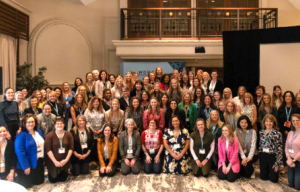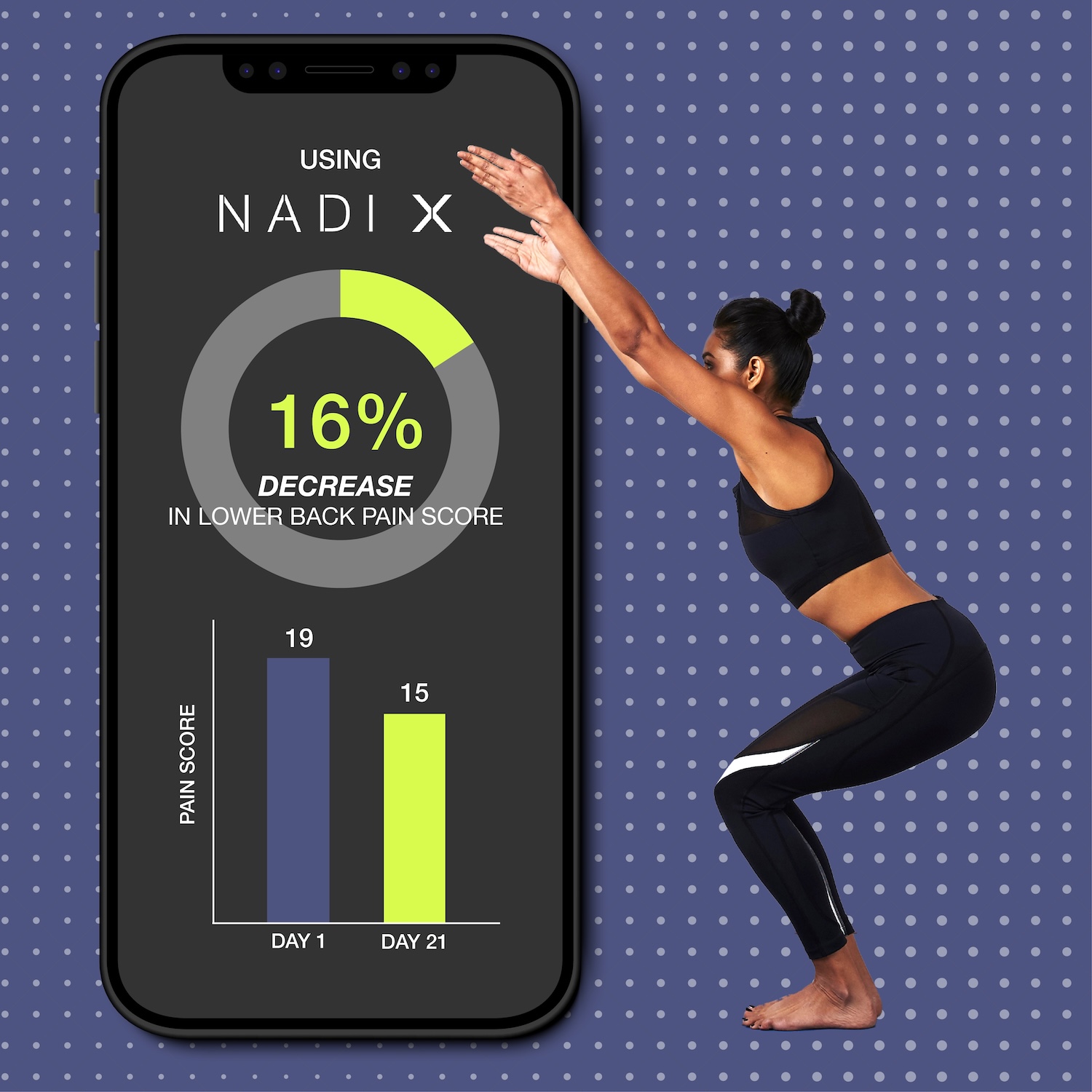
Women in Textiles Summit shines in Arizona
Opinion


Dr. Marie O’Mahony catches up with Billie Whitehouse, a leading light in the world of wearables, at the recent ATA EXPO 2023 in Orlando.

24th January 2024
Marie O'Mahony
|
Orlando, FL, USA
Billie Whitehouse is one of the leading lights in wearables using her Wearable X brand to develop her own design, as well as collaborating with clients that are in some cases predictable (Google), but others less so (Durex). An Australian now largely based in New York, Billie has energy, passion and positivity in abundance which she needs to meet the challenges of taking wearables from concept to full development. I caught up with her in Orlando where she was giving a presentation at the AT EXPO 2023.

MOM: Thank you very much Billie for making the time here this afternoon for our interview. I know that you have a flight to catch for another speaking engagement later today, so I will get straight into the questions. Let’s start with where you see the biggest wearables market at the moment?
BW: it's a great question! I think truthfully, it's has to be inside healthcare. Healthcare is really paying a lot of attention to the wearable technology space with some really interesting innovations. But there still needs to be synergies in terms of systems and data storage.
MOM: Do you see that going over into the medical as well?
BW: For us it starts in wellness, there has been a huge focus there for a long time. While it’s that lovely buzz word that you know has a large billion-dollar price tag next to it! It can spill over into the healthcare and medical sectors. There's ongoing work being done in the collaboration between insurance companies and these device companies, and that ultimately is a path that we're also looking at taking very strategically.
MOM: That leads me to the next question, which is whether in the next five years you see that as continuing or do you think there's going to be a change in that trajectory.
BW: If we look at the market for lower back pain, it costs the US over $600 billion in lost work and rehabilitation. If we can use smart textiles wearable innovation in this space to truly try and support patients and get some of those dollars back - not just dollars but also recovery time for the individual. Ultimately that's an area that's not going to go away, it's going to continue to grow.
MOM: In terms of haptics do you see this as purely digital, such as vibration, or do you see it more as a hybrid development between the textile aspect and the vibration or digital coming together in some way?
BW: Most certainly, I see it as a hybrid collaboration. In fact, Bayer bought a haptic polymer company almost 15 years ago now so there is innovation happening in that space. It’s a matter of timing and cost and customer readiness that ultimately gets people to truly adopt. You know sometimes it takes a crystal ball to see the future but ultimately it really is about those three pieces of the puzzle coming together so that you can build something that's true and meaningful. Haptics you know can be everything from a press stud clip that you feel to the actual actuators in your phone, The haptic polymers will be market available before we know it.
MOM: You advocate for design and urge the placement of human experience above technological experience. Do you think that wearables have an image, or a design problem in this respect, or are you pointing at the consumer?
BW: I’m not bold enough to say that there's a design problem! I think that there is an effort needed in terms of truly designing the experience with the human in mind, not just the data in mind. While the data is really important to the consumer it is not the only thing and it's really important that we designed the full experience with that human in mind. There are a range of excellent books from the D-school on human centric design that includes everything from ergonomics.It’s important to understand the different hand shapes and gestures that are used when interacting with the technology. I think we could always have more effort in combining design and engineering and let those explorations lead to really great technologies.
.jpg)

MOM: I think that bring us to Durex! We don’t normally think of the brand in terms of clothing, can you tell me about that project and how it came about?
BW: Yes. So Fundawear, though not currently in production, is in fact 10 years old this year and that was the project we did with Durex. It was vibrating underpants for couples in long distance relationships. You can imagine that the technology has evolved a lot since then, and in fact one of the many versions of this product that we worked on used an induction charge which was super early for that technology, so you can imagine the price tag that was attached to that! This project really came through a collaboration with an agency called Havas who came to myself and Snepo Technology to say can you do this. My enthusiastic nature basically showed them immediately some other projects that I've been working on one of which was called ‘knickers in a knot tie them in the right spot’ so they said yeah, that's exactly spot on what we want - so from there the collaboration was born!
MOM: Sounds like great timing! You also mentioned that there is a sustainability aspect, can you expand on that a little bit?
BW: In the early prototypes, yes. The original pairs of pants were all made out of bamboo spandex. At the time we didn't quite have the same production quality of bamboo spandex, so ultimately, we had to go to different types of fabrication. The goal was that you could have the electronics separated from the underpants and have as many pairs of underpants as needed.
MOM: Where do you think we are now with wearables in terms of environmental impact?
BW: Baby steps in the right direction. I would really like to see a lot more effort being put towards how we create sustainable electronics, not just wearables, but electronics as a whole. I'm sure like everybody we have drawers filled with old phones and laptops and it really would be wonderful to see these technology companies put a big effort towards that. I'm seeing baby steps, but I think we really need to encourage that.
MOM: So where do you see the more immediate gains to be made in that respect, the low hanging fruit as it were?
BW: I think those opportunities lie with D, E and I – Diversity, Equity and Inclusion. I think that making sure that these technologies are truly meeting everyone's needs. I would like to see more of that effort come to fruition, and that was certainly some of the work that I was doing with Google Atap., focusing on how enabling technologies can be utilised by and for the Disability Community.

MOM: What's next for you, what should we be looking out for?
BW: We've been focused on rehabilitation, and so today we are giving a presentation at our first medical conference, is in Atlanta ACRM (American Congress of Rehabilitation Medicine). This is a rehabilitation research conference where we're sharing the results of our first pilot study (Nadi X Lower Back Pain Pilot Study) with Spectrum Ergonomics physical therapy team. The participants were asked to perform a single yoga posture from our app and wearing our product. Participants were doing that several times a day as part of their rehabilitation process, and we saw a significant decrease in lower back pain during the four week study period. So that area of R&D in rehabilitation is really interesting to us, but we've also got some early research and development in the maternity space. This is using haptics again, and intimates product, but for mastitis to stimulate the milk ducts and avoid clogging of the ducts during breastfeeding.
MOM: In terms of start-up culture, do you see anything in the wearables space that really excites you at the moment?
BW: Of course! Though they're not always in the exact wearable space “start up” space but I certainly can't ignore companies like Whoop, and I'm very excited by what they do and how they are looking at recovery. It’s truly exciting because they have really thought about the individual and the life cycle of wellness and fitness. I wouldn't even call them to start up anymore but it's certainly a company worth mentioning. I'm really interested in companies like Pangai, also not really a start-up anymore, but you know I’m interested in the companies that are looking at sustainable textiles. They're looking at everything from silk spun from spiders that is sustainably sourced and manufactured, and their whole mission is around sustainability. Companies like Archetype AI are doing some really interesting work in understanding physical AI. I am excited by innovation in the AI, sustainability & fitness space.
MOM: Do you see the climate for start-ups as being good at the moment or do you think it is still a pretty tough gig?
BW: I mean this year has been a difficult year to raise money! If that's the game that you're going to play in terms of your start-up then it’s certainly been tough going for sure. That doesn't mean things don't change. Including ‘.ai’ in your company can support your efforts in fundraising, even if there have been legislations reviewed in government recently... So, you know it's not an easy time but it is also the case that in times of downturn that often is when people start businesses, and that can be really exciting and stimulating. Hopefully people can do it on a lean budget and don't need to raise money quickly. Then there is definitely opportunity.
MOM: One of the big challenges for wearables historically has been the scaling up for commercialisation. Do you see any of the barriers for that coming down?
BW: Oh, certainly headway is being made there and I think those barriers have begun to topple. By this I mean that there are more manufacturing facilities that are prepared to experiment in this space and collaborate with companies like we have seen here today [at the AT EXPO], and so you know there's certainly more openness to it. It doesn't mean that there won't be mistakes made, but sometimes you have to make them quickly and not lose money while you're making them so that you can continue to innovate.
MOM: Billie, thank you, this has been terrific. I appreciate you sharing your thoughts on the industry and the challenges. I’m also excited to see how your work in the medical field progresses, keep us posted.

Business intelligence for the fibre, textiles and apparel industries: technologies, innovations, markets, investments, trade policy, sourcing, strategy...
Find out more